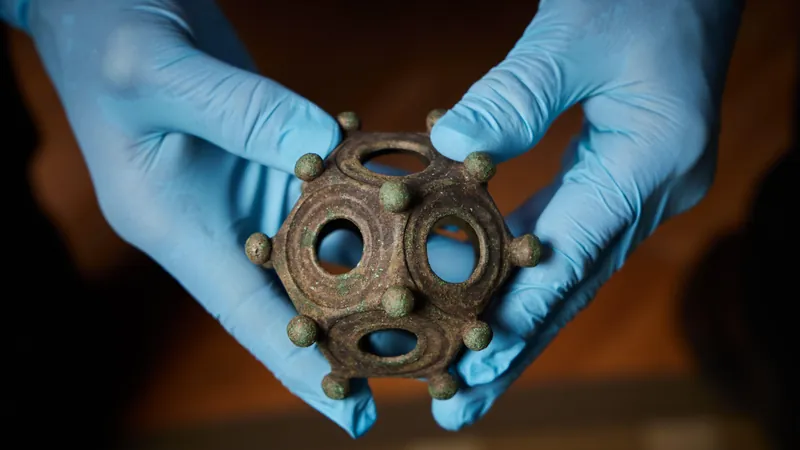
Unlocking the Secrets of the Roman Dodecahedron: The Enigmatic 12-Sided Artifact
2025-07-14
Author: Nur
A Glimpse into History
Meet the Roman dodecahedron, a captivating 12-sided bronze artifact that has intrigued archaeologists since its discovery in 1739 in the English Midlands. This mysterious object, dating back to the second to fourth centuries A.D., has sparked numerous theories about its purpose, yet none have been definitively proven.
Widespread Yet Mysterious
Over 120 examples of these dodecahedrons have been unearthed across the northwestern provinces of the Roman Empire, ranging from Austria to Belgium, and even as far as Great Britain and Switzerland—but curiously absent in Italy. According to renowned classical archaeologist Michael Guggenberger, these objects might originate from the Gallo-Roman culture, potentially linked to Celtic tribes.
Shape and Features that Intrigue
The Roman dodecahedron's striking design consists of 12 pentagonal faces, 20 corners adorned with small spheres, and varying holes on each face, creating a hollow form. They typically measure between 1.6 and 3.9 inches in height and weigh 1 to 20 ounces, boasting exceptionally thin walls with no inscriptions whatsoever.
A Host of Theories with Few Answers
Despite extensive research, the exact purpose of these artifacts remains elusive. They have been found in diverse contexts, such as graves, coin hoards, and refuse, leading to wild speculation ranging from weapons to candlestick holders, measuring devices, and even toys. However, most of these theories have been deemed improbable.
The Cosmic Connection
Guggenberger proposes a more symbolic interpretation, linking the dodecahedron to the philosophical beliefs of the ancient Greek thinkers Plato and Pythagoras. In this worldview, the dodecahedron serves as a representation of the universe, embodying a connection to the heavenly realms.
A Clue from the Grave
A noteworthy discovery in 1966 at a woman's grave in Germany may offer insights into the dodecahedron's use. The object was found beside a rod-shaped bone artifact, suggesting it may have functioned as a scepter-like symbol, potentially tied to Druidic traditions—further reinforcing its mystical significance.
An Enigmatic Legacy
Though the Roman dodecahedron remains shrouded in mystery, its rich history and potential connections to ancient philosophies and cultural practices continue to inspire fascination. For now, it stands as a powerful symbol of the cosmos, weaving a narrative that transcends time and cultures—an artifact begging for answers.



 Brasil (PT)
Brasil (PT)
 Canada (EN)
Canada (EN)
 Chile (ES)
Chile (ES)
 Česko (CS)
Česko (CS)
 대한민국 (KO)
대한민국 (KO)
 España (ES)
España (ES)
 France (FR)
France (FR)
 Hong Kong (EN)
Hong Kong (EN)
 Italia (IT)
Italia (IT)
 日本 (JA)
日本 (JA)
 Magyarország (HU)
Magyarország (HU)
 Norge (NO)
Norge (NO)
 Polska (PL)
Polska (PL)
 Schweiz (DE)
Schweiz (DE)
 Singapore (EN)
Singapore (EN)
 Sverige (SV)
Sverige (SV)
 Suomi (FI)
Suomi (FI)
 Türkiye (TR)
Türkiye (TR)
 الإمارات العربية المتحدة (AR)
الإمارات العربية المتحدة (AR)